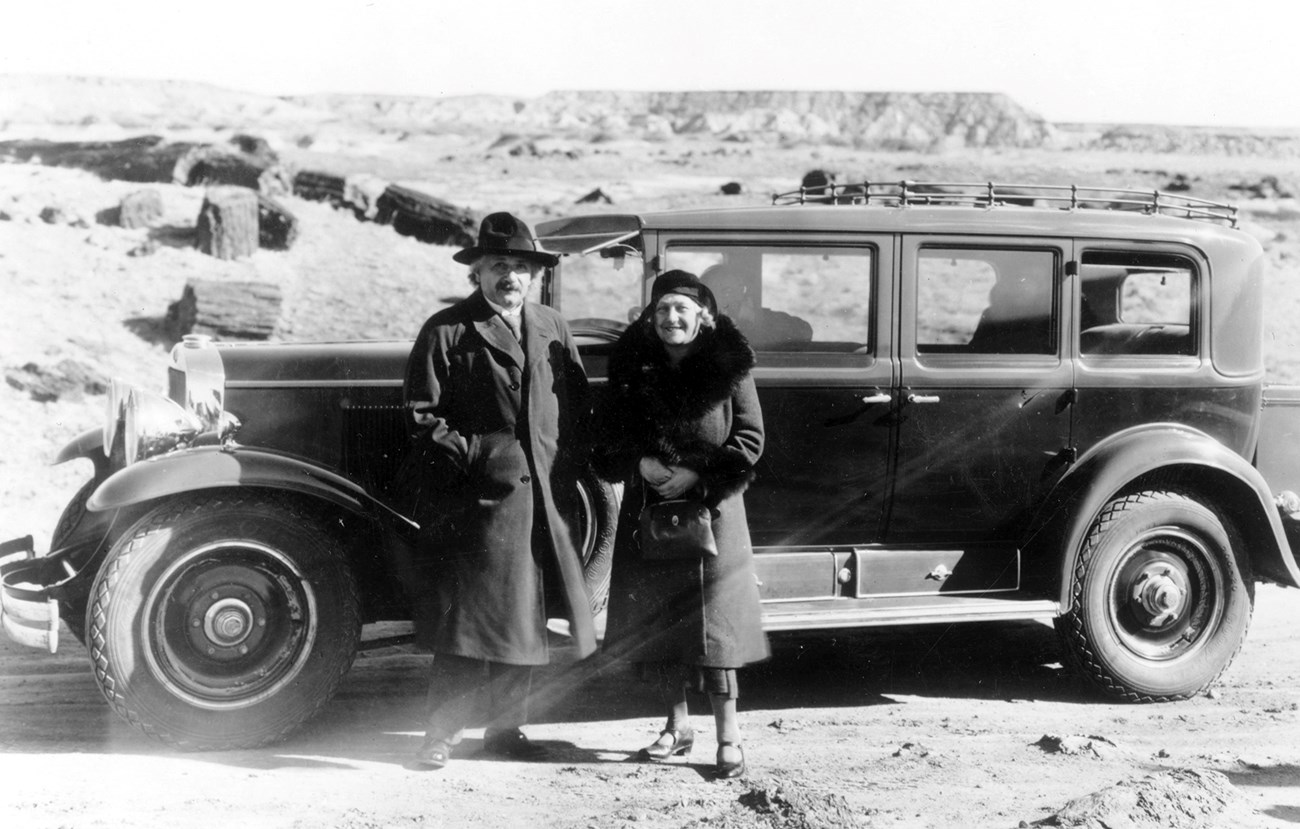(page 1 of 9)

National Park Service Geologic Resources Division

NPS photo.
Introduction
The history of paleontology is filled with fascinating accounts of discovery and scientific inquiry, and an evolving understanding of ancient life forms preserved within Earth’s geologic strata. A portion of this paleontological story is preserved within national parks, monuments and other administered areas under the care of the U.S. National Park Service. Collectively, at least 280 national park units have revealed fossilized remains and traces of prehistoric animals and plants as evidence of America’s rich paleontological heritage. Seventeen National Park Service areas were established through authorizing legislation or proclamation that specifically references paleontological resources.
The history of paleontology associated with the National Park Service actually predates the establishment of the first federal parks and the creation of the bureau which administers these parks. Therefore, this publication considers many sources of historical information pertaining to fossils from either a geologic or cultural resource context to our national parks. This includes fossil occurrences from archeological sites which may date from hundreds to thousands of years ago. For example, projectile points produced from petrified wood have been documented from archeological sites in a number of parks, including Chaco Culture National Historical Park, New Mexico, and Petrified Forest National Park, Arizona. In addition to fossils that have been documented in archeological sites, fossils also occur within the building stones of historic structures, and in various historic or ethnographic contexts (Kenworthy and Santucci 2006).
A long list of distinguished paleontologists, scientists and other notable figures accompanies the history of paleontology associated with the National Park Service. During the 19th century, Joseph Leidy (Academy of Natural Sciences and University of Pennsylvania), Othniel Charles Marsh (Yale University), Edward Drinker Cope (University of Pennsylvania), Spencer Baird (Smithsonian Institution), Charles Doolittle Walcott (Smithsonian Institution and U.S. Geological Survey), John Wesley Powell (U.S. Geological Survey), and others were involved in the field collection, scientific study, or curation of important fossils from areas now managed by the National Park Service. These paleontologists are just a small sample of the famous scientists who were directly involved with fossil research and discoveries from parks during the 20th and early 21st centuries.
This summary represents the first attempt to compile the collective histories of paleontology for the U.S. National Park Service. Given the rich and extensive history of paleontology associated with national parks, it is not possible to present in-depth discussions for any particular park, discovery, individual or historical event. The primary intent here is to provide a framework for organizing and presenting the extensive amount of historical information and to illustrate some of the significant paleontological history tied to National Park Service fossils.
Preserving Fossils in the National Parks
The information presented in this brief history is organized chronologically into seven time periods reflecting the historic significance of the National Park Service paleontological resources.
Pre-1492 AD
Fossils & Native People
1492–1800
Colonial & Early National1800–1865
Antebellum through Civil War1865–1916
Early National Parks & Monuments1916–1966
First 50 Years of the NPS1966–2008
Filling Gaps in the Fossil Record2009–Present
A New Beginning for NPS FossilsLast updated: January 27, 2023
